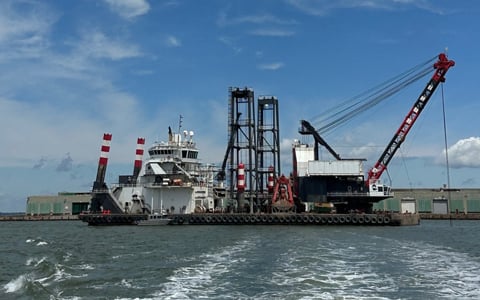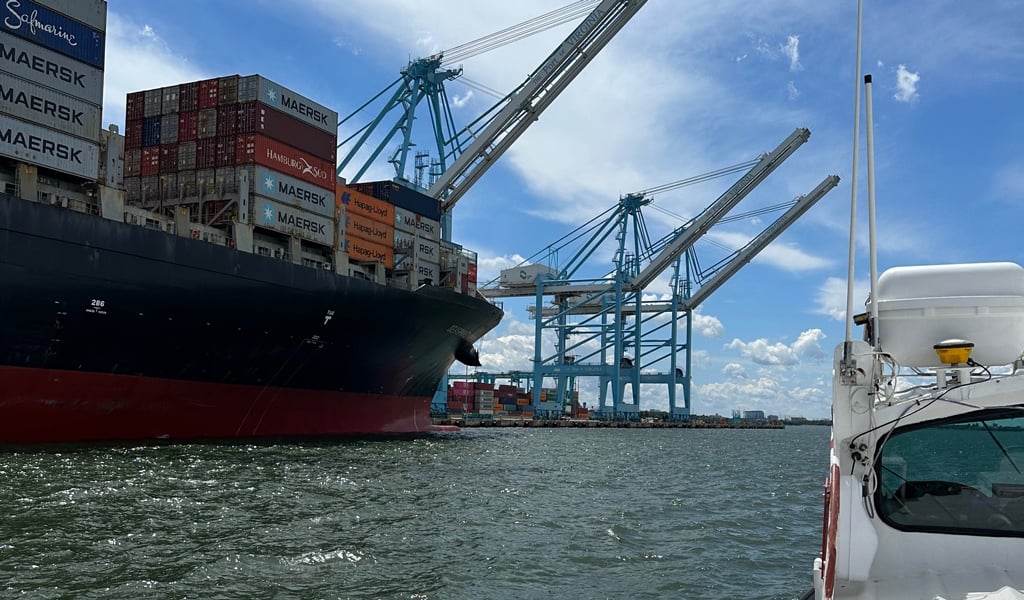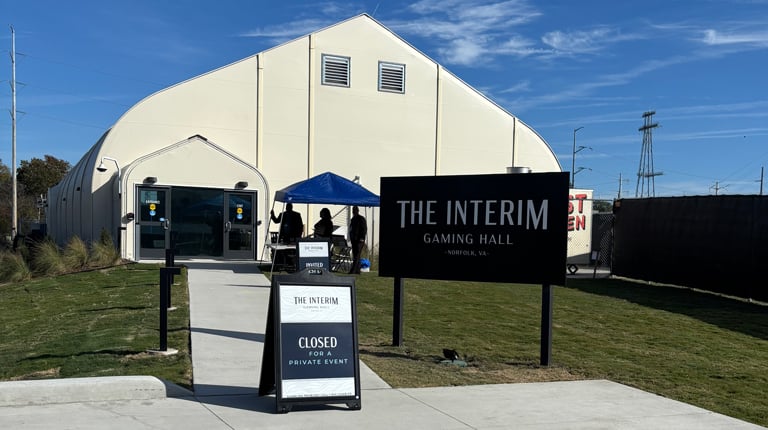
The Port of Virginia has reached a historic milestone: dredging at the Virginia International Gateway (VIG) is complete, officially making it the deepest port on the East Coast. This achievement, part of a larger deepening and widening program, spans VIG, the Norfolk International Terminal (NIT), and the entrance channels from the Atlantic Ocean Channel through Thimble Shoal into Hampton Roads. Waterway Surveys & Engineering, now VHB, played a central role in this transformation, providing early planning, design, and permitting support to help unlock the region’s future as a global shipping hub.
The effort deepened the channel to 55 feet, creating the capacity for two-way traffic of ultra-large container vessels (ULCVs). This means faster, safer access for larger ships, reduced congestion, and enhanced efficiency—positioning Hampton Roads to handle the next generation of maritime trade and strengthening the Port’s competitive edge.
“This wasn’t just a construction project—it was a multi-year, multi-agency effort that required deep technical knowledge and coordination,” said John Walsh, PE, Project Manager for the project from concept to completion. “This achievement positions Virginia for decades of growth, and it’s rewarding to see our efforts support the Port’s long-term success.”
The project required extensive collaboration with the Virginia Port Authority, Virginia Pilot Association, U.S. Army Corps of Engineers, Environmental Protection Agency (EPA), and U.S. Coast Guard, as well as $2.5 million in sediment sampling to secure offshore disposal approvals. VHB’s planning and permitting leadership helped pave the way for these complex approvals.
As work continues at NIT and across Hampton Roads, the completed VIG dredging serves as a cornerstone achievement—part of a long-term strategy to expand capacity, improve reliability, and strengthen the supply chain.
“This is about building long-term capacity,” said John. “VHB is delivering infrastructure that meets demand today and sustains growth for decades to come.”
Find out more about our Coastal Engineering & Resiliency capabilities.



